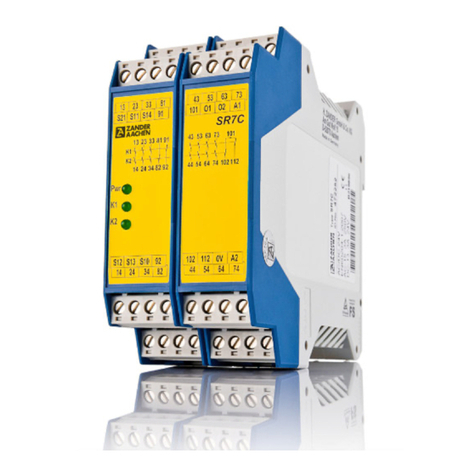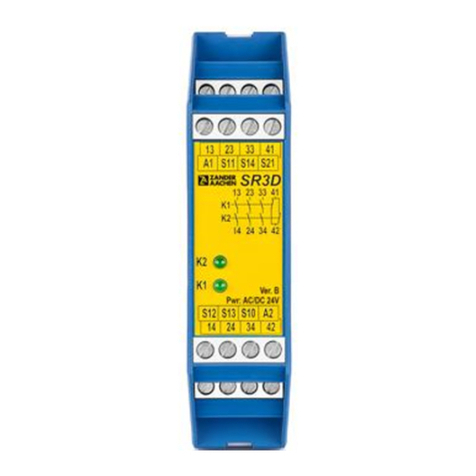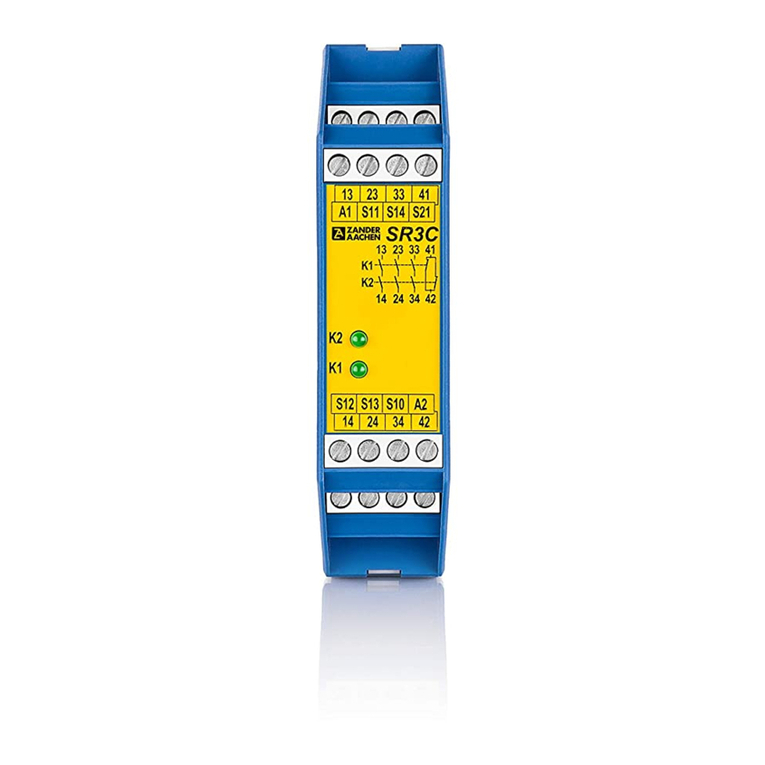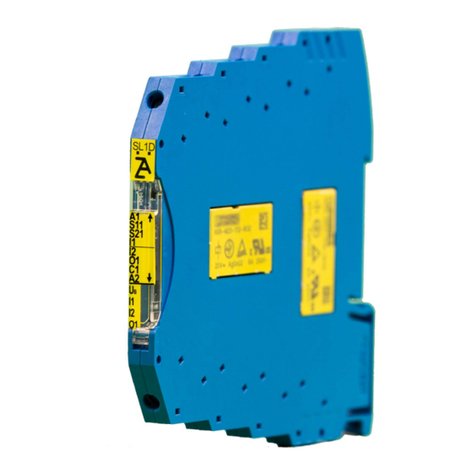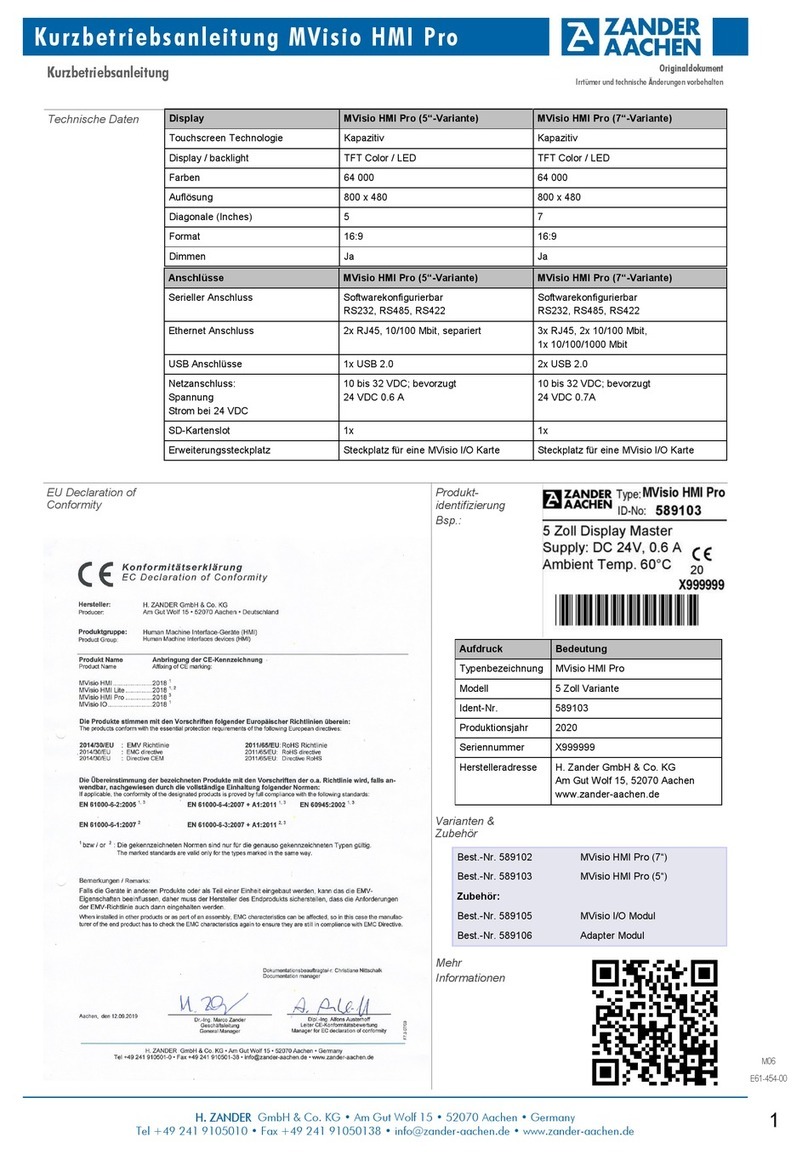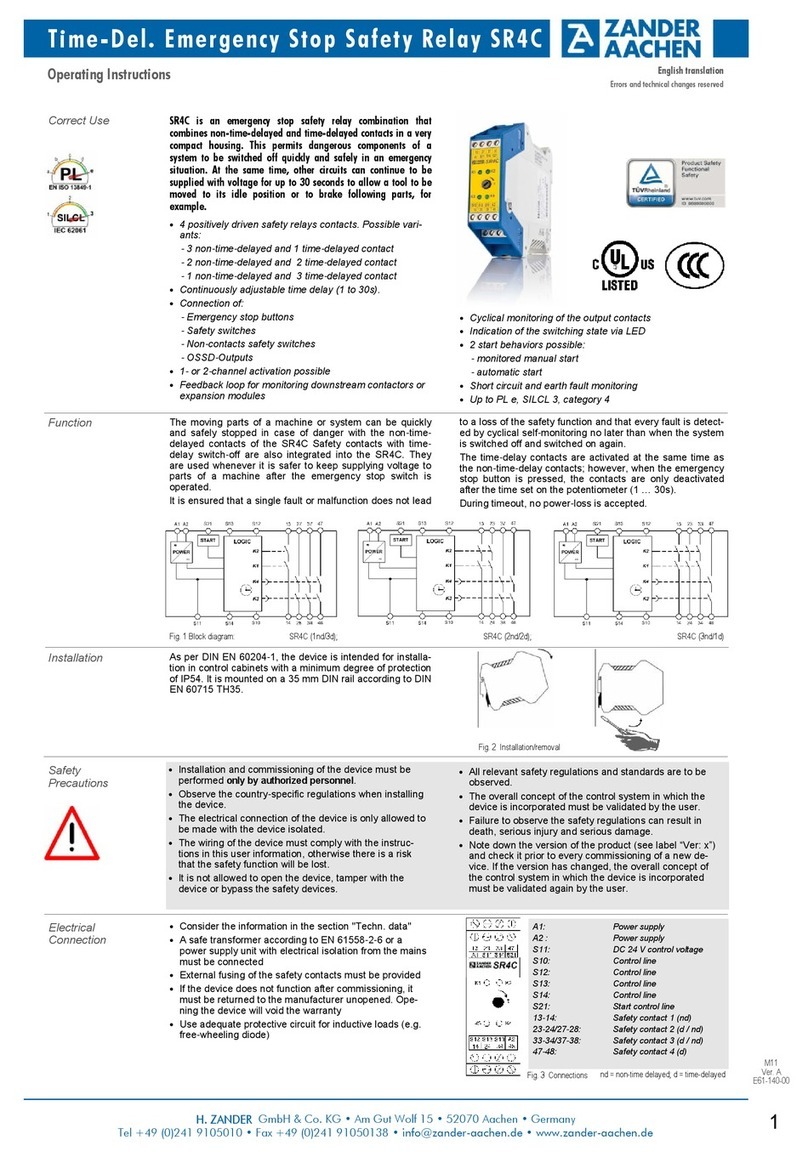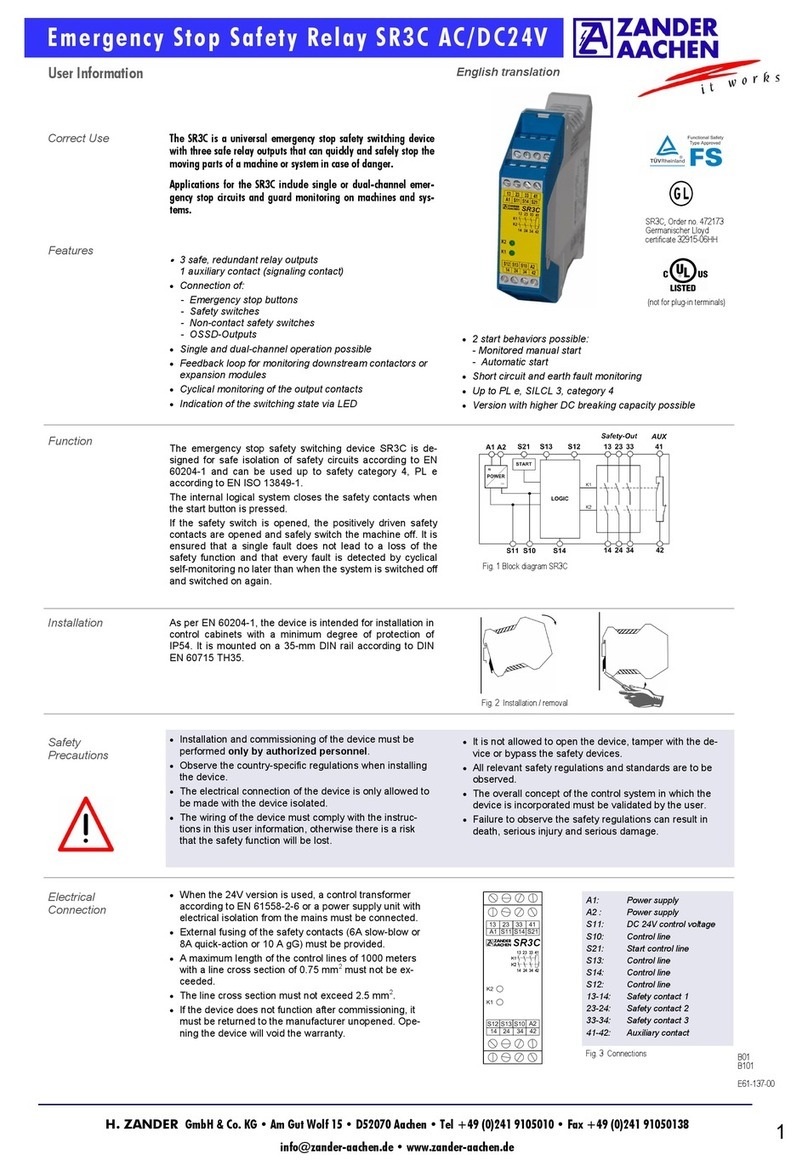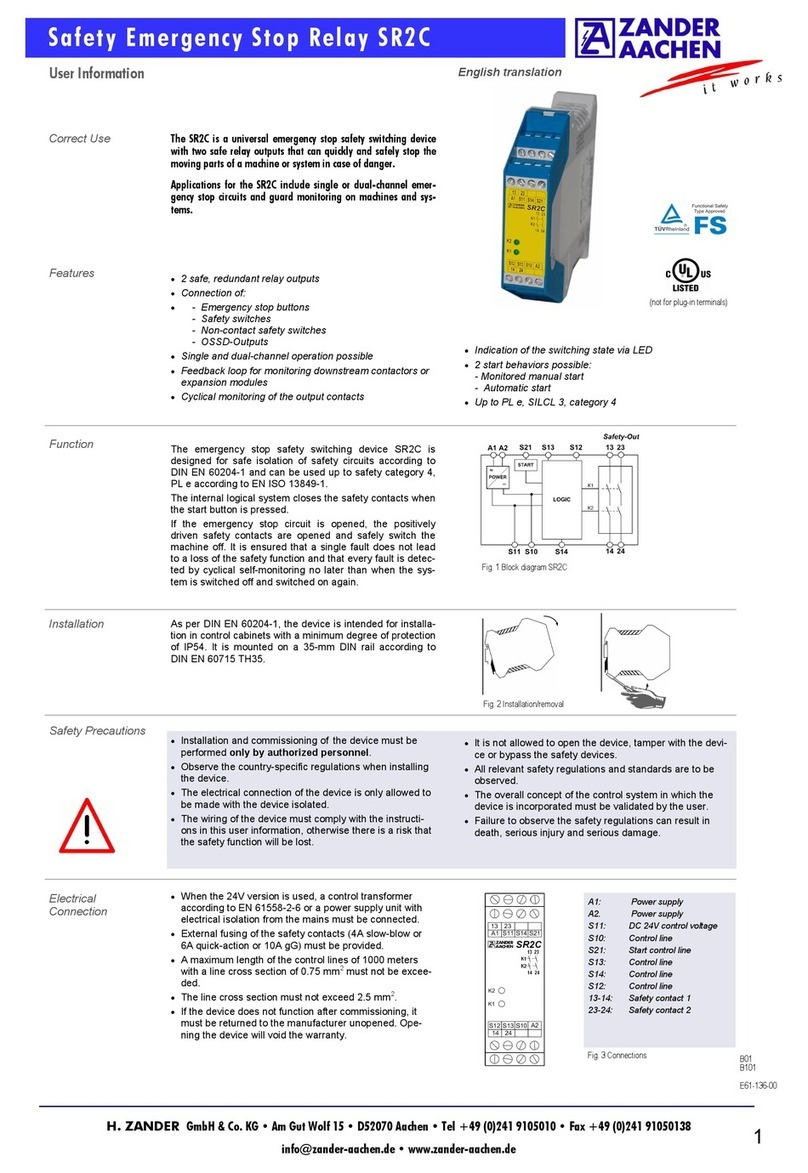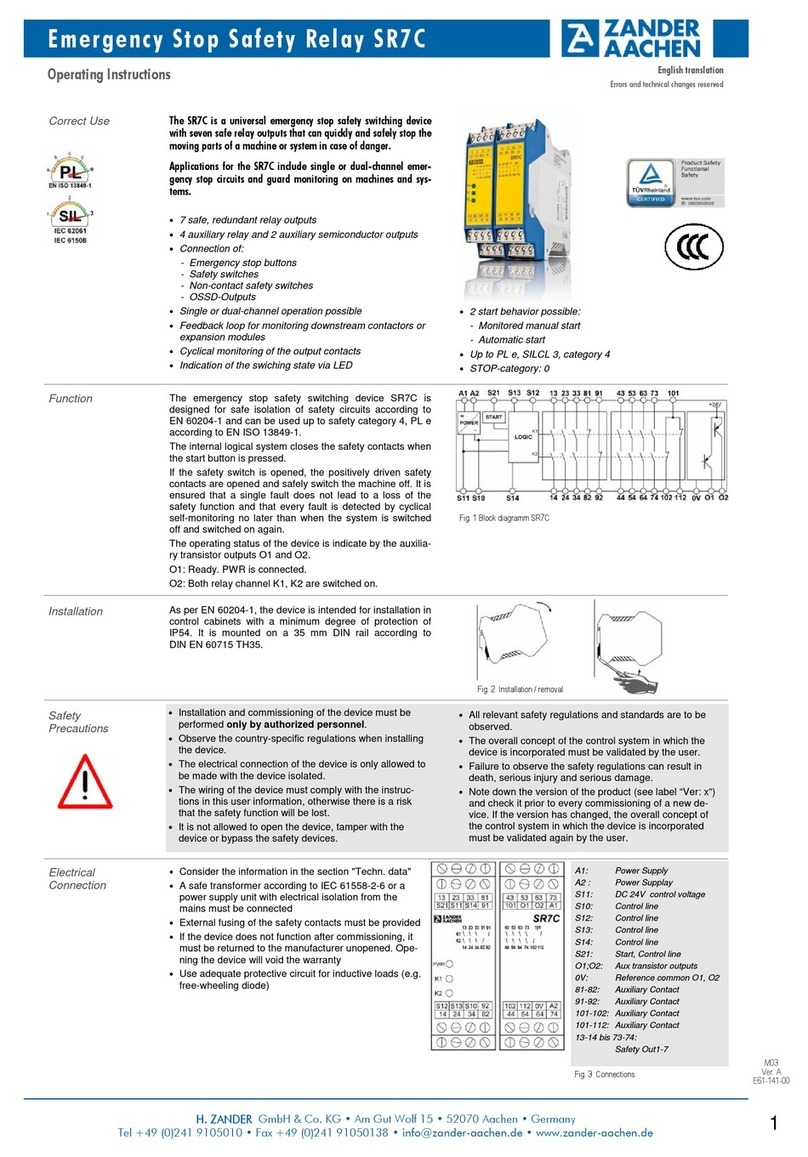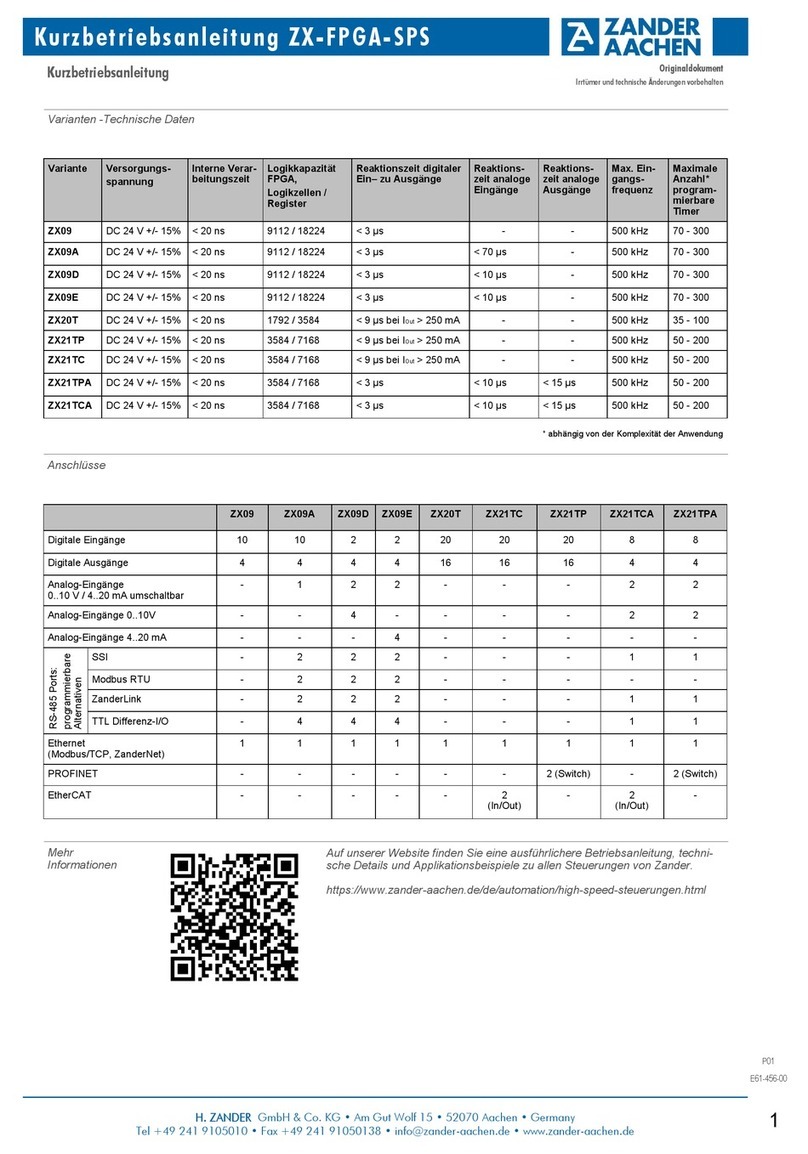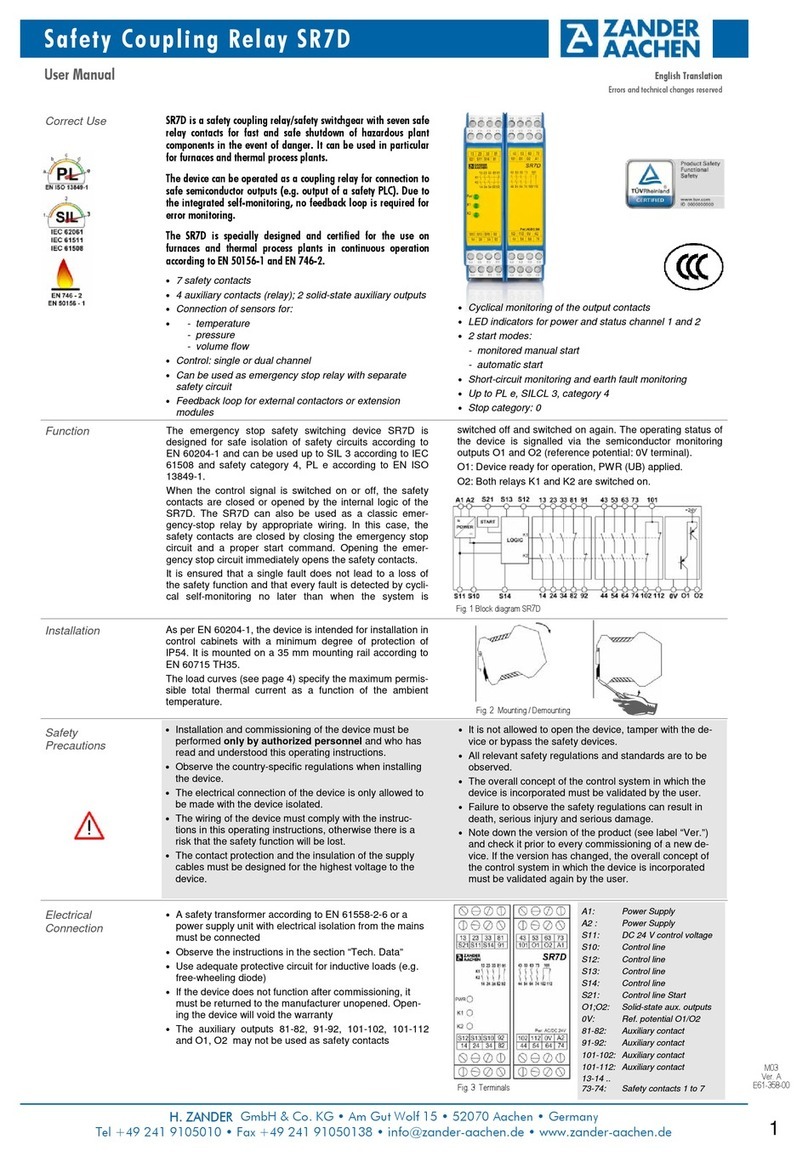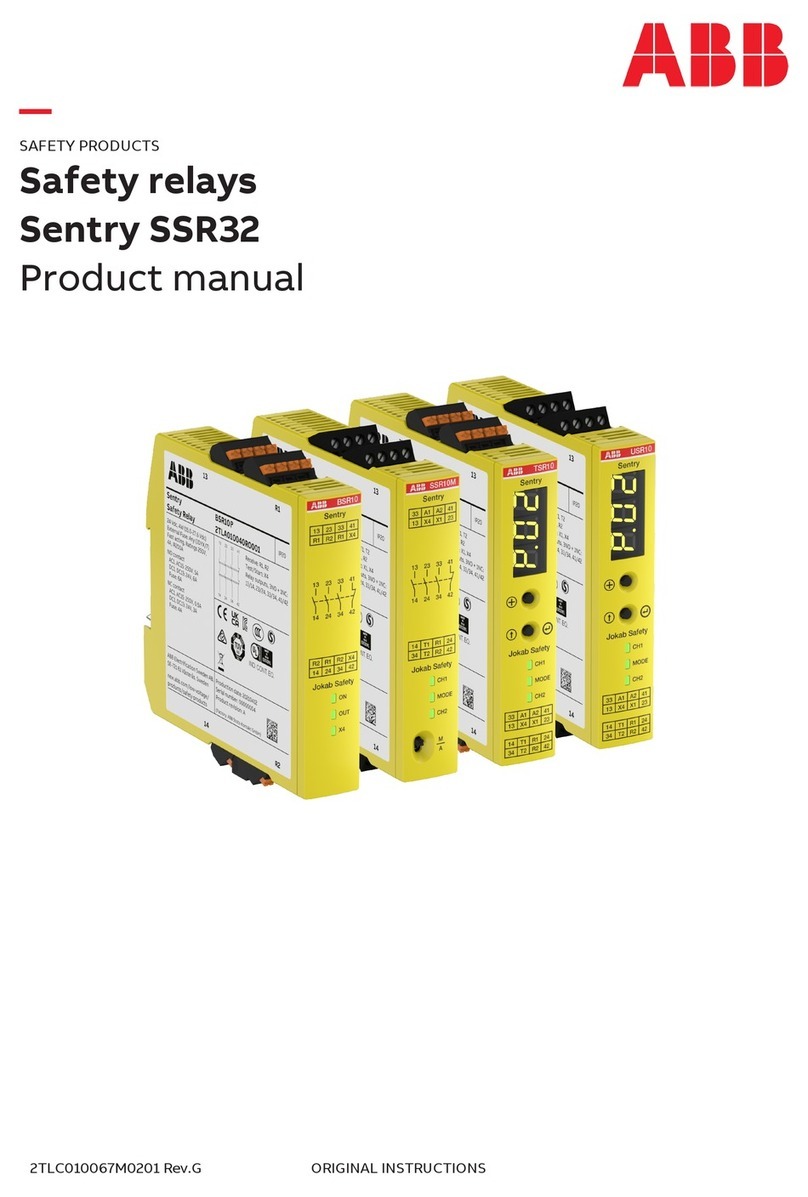
H. ZANDER GmbH & Co. KG • Am Gut Wolf 15 • 52070 Aachen • Germany
Tel +49 (0)241 9105010 • Fax +49 (0)241 91050138 • info@zander-aachen.de • www.zander-aachen.de
2
Safety Relay for Elevators SR3E
N03
Ver. A
E61-421-00
Operating Instructions English translation
Errors and technical changes reserved
Fig. 10:
Connecting to a safety PLC
(category 4, up to PL e / SIL 3)
Prerequisite:
Safe PLC output meets the
required safety level and short
circuit between PLC output and
SR3E can be excluded
(e.g. wiring inside an electrical
installation space - see EN ISO
13849-2; Tab D4).
Fig. 9:
Two channel emergency stop with
pnp-outputs/OSSD-outputs with
its own short circuit monitoring.
(category 4, up to PL e / SIL 3)
Prerequisite:
Signal generator meet require-
ments for PL e / SIL 3, too.
Fig. 5:
Dual channel emergency stop
with short circuit and ground fault
monitoring.
(category 4, up to PL e / SIL 3)
Advice: Follow the guidelines in „Electrical Connection“ during the start-up.
Commissioning
Procedure 1. Input circuit:
Depending on the risk evaluation choose one of the wiring
diagrams in „Applications“ (Fig. 5 to Fig. 10).
2. Choose start mode:
Connect the start button with S11 and S21 for monitored
manual start or connect S21 with S12 directly for automatic
start (Fig. 11 or Fig. 12).
Warning:
If “Automatic start” is set, bear in mind that the safety
contacts will switch immediately after the power supply is
connected. If “Monitored manual start” is set, the start
button must be opened after wiring.
3. Feedback loop:
If external contactors or extension modules are used,
connect them according to Fig. 13 or Fig. 14.
4. Power supply:
Connect the power supply to A1 and A2 (Fig. 13).
Caution: Power must not yet be activated.
5. Starting the device:
Switch on the operating voltage.
Warning:
If the “Automatic start” starting behaviour is set, the safety
contacts will close immediately.
If the “Monitored manual start” starting behaviour is set,
close the start button to close the safety contacts.
LEDs Pwr, K1 and K2 are lit.
6. Triggering safety function:
Open the emergency stop circuit by actuating the connect-
ed safety switch. The safety contacts open immediately.
7. Reactivation:
Close the emergency stop circuit. If “Automatic start” is
selected, the safety contacts will close immediately.
If the “Monitored manual start” starting behaviour is set,
close the start button to close the safety contacts.
Fig. 11:
Monitored manual start.
It is monitored that the start button
has been opened before the
safety switch is closed.
Prerequisite:
Power supply may not be inter-
rupted
Fig. 12:
Automatic start.
Maximum allowable delay when
closing the safety switches at
S12 and S13/S14:
S12 before S13/S14: 200ms
S13/S14 before S12: no limit
Warning:
Safety contacts will be
activated immediately at
power-on.
Depending on the application or the result of the risk assessment according to EN ISO 13849-1, the device must be wired as
shown in Fig. 5 to Fig. 16.
Applications
Fig. 7:
Single channel emergency stop
with ground fault monitoring.
(category 1, up to PL c / SIL 1)
Note:
Not suitable for applications in
elevators according to EN 81-20
Fig. 6:
Dual channel emergency stop
with ground faultt monitoring.
(category 3, up to PL d / SIL 2)
Note:
For applications according EN
81-20 a fault exclusion for short
circuit between S12 and S14 is
required
Fig. 8:
Dual channel safety guard
monitoring with short circuit and
ground fault monitoring.
(category 4, up to PL e / SIL 3)
Emergency Stop
Circuit
Start Behaviour
Fig. 13:
Feedback loop for monitored
manual start.
The feedback loop monitors
contactors or the expansion
modules .
Feedback Loop Fig. 14:
Feedback loop for automatic
start.
The feedback loop monitors
contactors or the expansion
modules .
Power supply
and
Safety contacts
Fig. 15:
Power supply A1 and A2.
Fig. 16:
Connecting load to safety con-
tacts. Voltage „+V“ according to
techn. Data.
ATTENTION:
Inductive loads should have
adequate protection circuit such
as a free-wheeling diode.
ATTENTION: Loss of functional safety!
For the applications according Fig. 9 and Fig. 10 the following is to be noted:
Make sure that the ground potential of the signal generator and the SR3E is the same
It must be ensured that any switch-on pulses (light test) sent by the signal generator do not lead to a
short activation of the safety relay and should therefore basically be deactivated.
